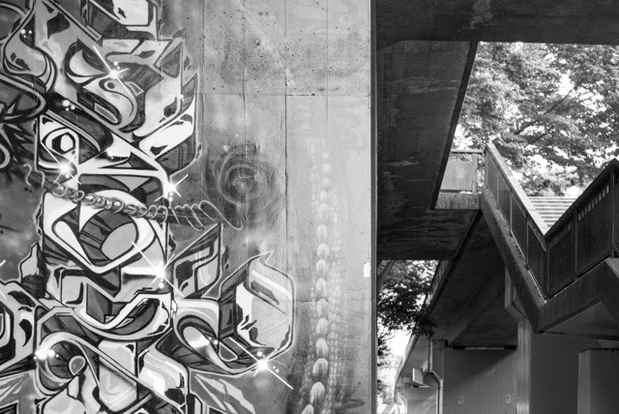Adi Tarkay “A Story of Three Halves”
Fuchs Projects

[Image: Adi Tarkay "Tokyo 2" 2016, Print on Metal, 27.5 x 18.5 in.]
This event has ended.
Fuchs Projects presents the first NY solo exhibition of Adi Tarkay.
“There is a creative fraction of a second when you are taking a picture. Your eye must see a composition or any expression that life itself offers you, and you must intuitively know when to click the camera. That is the moment when the photographer is creative. The Moment. Once you miss it, it is gone forever.”
Henri Cartier-Bresson (1908-2004) – French photographer, one of the founding fathers of modern photography, and one of the founders of Magnum Photos.
The works of Adi Tarkay are frozen in time and space. Adi explores the space and the camera and extricates the single moment from them. He isolates it from the infinite continuum of time which flows in the space, which is fixed and unchanging. The works presented in space are results that the photographer / researcher serves us in a familiar format, in an unknown photographic space, and in a median arrangement, a layered world of images, perhaps imaginary, perhaps real. The works reflect the unique way in which the photographer works and looks at the world that surrounds him. Photographs by Adi arise from thinking in black and white, and from a concept of black and white, in one median frame, without processing and without editing, in an objective look that makes use of light that is natural, uneven, dynamic, shimmering, reflections, plays of light and shadow, and focused use of light reflectors.
It is one story in three medians, two angles of one object, or two objects at the same angle, giving rise to a third. Adi’s camera reveals a continuous expanse, wide and rich, of a reality that has hidden away in the dead gaps between the discrete elements – such are the works of Adi – objects that are photographed in their natural environment are presented in a new context or at an unusual angle, revealing to us their “true essence” or “inner meaning” that was in fact evident to the eye, but would not have been given expression had we merely duplicated its presence and not revealed the formal-thematic relationships they and their environment conceal. Or, in the words of Diane Arbus: “I really believe there are things nobody would see if I didn’t photograph them.”
In Tarkay’s work, the shadows are more significant than the illuminated parts, and their presentation in a “half frame” format describes a dialog that is present between man and environment, and between the environment and man. A dialog of contrasts, a dialog of denial, and a dialog of acceptance. The immediate feeling coursing through you as a viewer is that this is “the decisive moment” – it is the point in time when all the essentials of shape and content merge into one, when events and ephemera find their place within a harmonious composition. It’s possible in every situation to discover that same fraction of a second, that fleeting moment, which summarizes the meaning of the entire event and enables it to be expressed in an extremely powerful visual language.
The works in the exhibition were photographed with a Leica digital camera using “half-frame” composition, which was in wide use in the 1960s. This median format was a development of the Olympus Pen camera, which produced twice as many photographs from each roll of film by halving the 35mm film format. A “half frame” is like a canvas that has been cut in two in order to put in another photograph that is sometimes a story in its own right, while at other times it complements the story in the other half. The somewhat exotic “half-frame” camera is the inspiration for the relationship between two “halves” of the story.
Adi, the son of Yitzhak Tarkay (1935-2012), is an Israeli romantic-modern artist, who was known for the colorfulness and romanticism in his works. He painted figures, mainly female ones, whose presence was an emotional reflection that blended harmoniously with the environment.
Like his father, whose work has often been associated with and connected to the spirit and style of impressionism, Adi’s passion for his work expresses a similar spirit of impressionism, but in his own particular style. Adi describes the reality without the mediation of emotion or intellect, and positions himself as an objective observer making use of passive photography to capture those aspects which may be unknown, but are in fact heavy with meaning in daily life. This allows him to stretch the boundaries of light, escaping into the darkness, and exposing its artistic potential. Its rational potential is inherent in the ability to reorganize reality itself into a mental reality in which all its components are loaded with compromise, meaning and intention.
Media
Schedule
from October 14, 2016 to November 09, 2016
Opening Reception on 2016-10-14 from 18:00 to 21:00